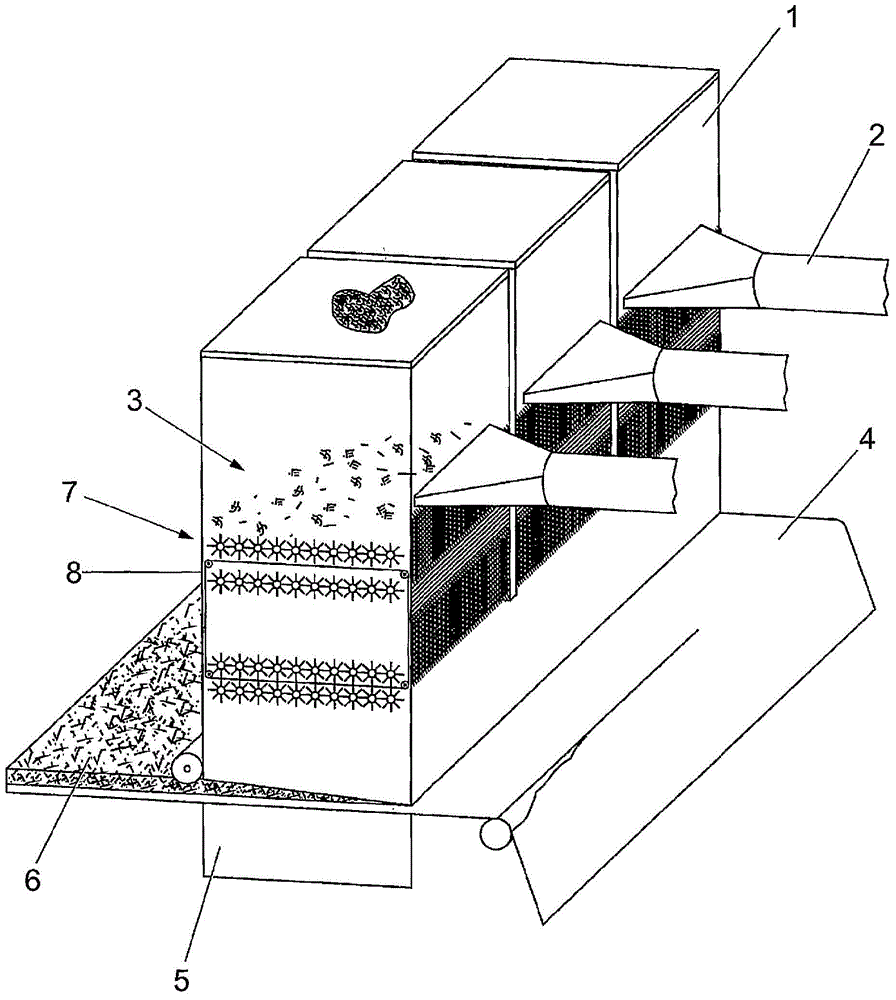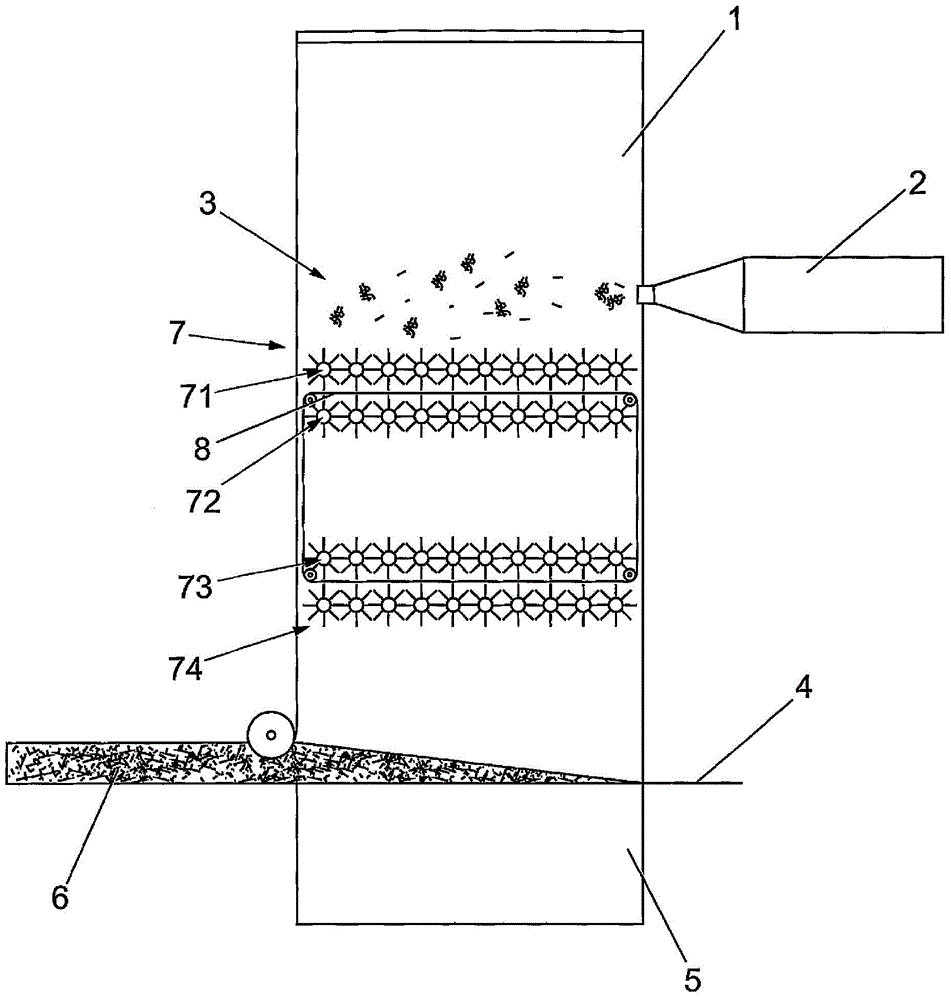Method of making mounting mats for mounting pollution control element
A pollution control component and pollution control technology, applied in engine components, mechanical equipment, exhaust devices, etc., can solve problems such as performance changes, fiber damage, and fiber length restrictions, and achieve cost-effective results
- Summary
- Abstract
- Description
- Claims
- Application Information
AI Technical Summary
Problems solved by technology
Method used
Image
Examples
example 1
[0164] An intumescent mounting mat having the following composition was prepared (all numbers are in parts by weight):
[0165] 54.3% fiber ("ISOFRAX")
[0166] 13.6% chopped R-glass fibers, 6mm long, heat treated at 700°C for 1 hour
[0167] 29.2% unexpanded vermiculite
[0168] 2.9% bicomponent fiber ("TREVIRA 255")
[0169]The intumescent mounting mat of Example 1 was prepared on a 310 nm wide nonwoven machine commercially available from Formfiber (Denmark) and operated according to the method disclosed above. The forming box of this machine basically corresponds to figure 2 The schematic diagram shown, whereby the forming box has two rows of three toothed rollers arranged opposite to each other on the upper part of the forming box and two rows of three toothed rollers arranged opposite to each other near the bottom of the forming box. Such as figure 2 As shown, the endless belt screen runs between the upper toothed roller row and the lower toothed roller row. The f...
example 2
[0188] A non-intumescent mounting mat having the following composition was prepared in the same manner as described in Example 1, except that, after the oven, the mat was compressed with rollers in such a way that after cooling, the initially formed thickness of about 45 mm was reduced. As small as about 13mm (all numbers are by weight):
[0189] 32.4% fiber ("SUPERWOOL 607HT")
[0190] 32.4% chopped R-glass fibers, 36mm long, heat treated at 700°C for 1 hour
[0191] 32.4% fiber ("SAFFIL 3D+")
[0192] 2.9% bicomponent fiber ("TREVIRA 255")
[0193] The resulting mounting mats were then tested in a real-condition fixture test, a thermal shock test, and a flex crack test.
example 3
[0205] A mounting pad (by weight) with the following composition was prepared:
[0206] 80% chopped R-glass fibers, which are 6mm long, and these fibers are heat treated in a kiln at 700°C for 1 hour
[0207] 20% chopped R-glass fiber, 36mm long (not heat treated)
[0208] The mounting mat of Example 3 was prepared as described in Example 1 on a 310 nm wide nonwoven machine commercially available from Formfiber (Denmark).
[0209]The glass fibers are fed into the nonwoven machine via a conveyor belt. No organic binder material is added. The glass fibers pass through a pre-opening section with 2 rotating toothed rollers. Afterwards, the fibers are blown into the top of the forming box. The fibers were collected on a forming wire moving at a speed of 1 m / min. The weight per unit area is about 18g / m 2 A tissue-type nonwoven scrim of ® is fed into the lower portion of the forming box by being placed over a forming wire to support the mat during transport through the nonwoven...
PUM
| Property | Measurement | Unit |
|---|---|---|
| thickness | aaaaa | aaaaa |
| diameter | aaaaa | aaaaa |
| diameter | aaaaa | aaaaa |
Abstract
Description
Claims
Application Information
 Login to View More
Login to View More - R&D
- Intellectual Property
- Life Sciences
- Materials
- Tech Scout
- Unparalleled Data Quality
- Higher Quality Content
- 60% Fewer Hallucinations
Browse by: Latest US Patents, China's latest patents, Technical Efficacy Thesaurus, Application Domain, Technology Topic, Popular Technical Reports.
© 2025 PatSnap. All rights reserved.Legal|Privacy policy|Modern Slavery Act Transparency Statement|Sitemap|About US| Contact US: help@patsnap.com



